Rare Rides: The Original Audi 5000 From 1980

Before Audi revolutionized rallying and four-wheel drive cars with the Ur-Quattro circa 1980, the company made front-drive vehicles underpinned by Volkswagen platforms (some things never change). Today’s Rare Ride 5000 hails from the waning days of Audi’s front-drive era, not long before an all-new 5000 set the template for aerodynamic sedan design.
The car North America knew eventually as the 5000 was called the 100 by nearly every other market in the world. The 100’s first generation emerged under Auto Union ownership, shortly before that company’s consolidation into Audi. The model name signified the number of horsepower available in the small sedan and coupe. Based on the C1 platform, the 100 sold over 800,000 examples in a first generation that ran from 1969 through 1977. Toward the end, Audi was already experimenting with what would become Quattro; in 1976 the company produced a four-wheel drive prototype which never moved past the development stage.
A second-generation (C2) 100 entered production in 1976 and was the first instance of Audi offering an inline-five engine in its midsize sedan. No longer interested in making a coupe, the C2 generation was offered primarily in five-door liftback guise, as well as a standard four-door sedan. A short-lived two-door sedan appeared, too, but European customers proved uninterested and the model was quickly dropped.
A range of engines were made available across Europe, among them four- and five-cylinder models in naturally aspirated and turbo guise, in gasoline and diesel, and with displacement between 1.6 and 2.1 liters. Horsepower figures ranged between 84 and 134 in the 100 model. A few years into production, Audi expanded the 100 range into the 200. A top-of-the-line offering, the 200 appeared in 1979 and offered only five-cylinder engines, with and without turbocharging. The top trim 200 was a fuel-injected 2.1-liter with a turbocharger, producing a raucous 168 horsepower in a 2,500-pound sedan.
North American examples utilized only five-cylinder power, in gasoline and diesel varieties. A turbodiesel was not offered in the U.S., and the naturally aspirated diesel was only available with a manual transmission. Adding to Audi’s diesel woes (sound familiar?), the brand’s engines were not compliant with California emissions regulations, and thus were off-limits in that market. 1980 was the first time U.S. customers got their hands on the 5000 I5 turbo; a 200 to everyone else. Emissions changes to the engine meant horsepower totaled 130 on domestic shores.
Keeping the subject domestic, in the U.S. the 100 was an alternative sedan choice. Between 1976 and 1982 Audi shifted 133,512 cars in America, but nearly 1,000,000 globally. Within that timeline, top brass at Audi decided a name change was in order, and in 1978 the 100 became 5000. The company also started its climb toward luxury with the 5000, delivering over 90 percent of its cars in the U.S. with the upscale S equipment package.
The company came into its stride a couple years later when the aerodynamic C3 5000 launched for the 1983 model year with Quattro four-wheel drive.
Today’s recently-sold Rare Ride is a superb yellow and brown example from 1980, equipped with a naturally aspirated gasoline engine and an automatic transmission. With 57,000 miles and lots of tweed, it appropriately asked $5,000.
[Images: seller]

Interested in lots of cars and their various historical contexts. Started writing articles for TTAC in late 2016, when my first posts were QOTDs. From there I started a few new series like Rare Rides, Buy/Drive/Burn, Abandoned History, and most recently Rare Rides Icons. Operating from a home base in Cincinnati, Ohio, a relative auto journalist dead zone. Many of my articles are prompted by something I'll see on social media that sparks my interest and causes me to research. Finding articles and information from the early days of the internet and beyond that covers the little details lost to time: trim packages, color and wheel choices, interior fabrics. Beyond those, I'm fascinated by automotive industry experiments, both failures and successes. Lately I've taken an interest in AI, and generating "what if" type images for car models long dead. Reincarnating a modern Toyota Paseo, Lincoln Mark IX, or Isuzu Trooper through a text prompt is fun. Fun to post them on Twitter too, and watch people overreact. To that end, the social media I use most is Twitter, @CoreyLewis86. I also contribute pieces for Forbes Wheels and Forbes Home.
More by Corey Lewis
Latest Car Reviews
Read moreLatest Product Reviews
Read moreRecent Comments
- Ajla Remember when Cadillac introduced an entirely new V8 and proceeded to install it in only 800 cars before cancelling everything?
- Bouzouki Cadillac (aka GM!!) made so many mistakes over the past 40 years, right up to today, one could make a MBA course of it. Others have alluded to them, there is not enough room for me to recite them in a flowing, cohesive manner.Cadillac today is literally a tarted-up Chevrolet. They are nice cars, and the "aura" of the Cadillac name still works on several (mostly female) consumers who are not car enthusiasts.The CT4 and CT5 offer superlative ride and handling, and even performance--but, it is wrapped in sheet metal that (at least I think) looks awful, with (still) sub-par interiors. They are niche cars. They are the last gasp of the Alpha platform--which I have been told by people close to it, was meant to be a Pontiac "BMW 3-series". The bankruptcy killed Pontiac, but the Alpha had been mostly engineered, so it was "Cadillac-ized" with the new "edgy" CTS styling.Most Cadillacs sold are crossovers. The most profitable "Cadillac" is the Escalade (note that GM never jack up the name on THAT!).The question posed here is rather irrelevant. NO ONE has "a blank check", because GM (any company or corporation) does not have bottomless resources.Better styling, and superlative "performance" (by that, I mean being among the best in noise, harshness, handling, performance, reliablity, quality) would cost a lot of money.Post-bankruptcy GM actually tried. No one here mentioned GM's effort to do just that: the "Omega" platform, aka CT6.The (horribly misnamed) CT6 was actually a credible Mercedes/Lexus competitor. I'm sure it cost GM a fortune to develop (the platform was unique, not shared with any other car. The top-of-the-line ORIGINAL Blackwing V8 was also unique, expensive, and ultimately...very few were sold. All of this is a LOT of money).I used to know the sales numbers, and my sense was the CT6 sold about HALF the units GM projected. More importantly, it sold about half to two thirds the volume of the S-Class (which cost a lot more in 201x)Many of your fixed cost are predicated on volume. One way to improve your business case (if the right people want to get the Green Light) is to inflate your projected volumes. This lowers the unit cost for seats, mufflers, control arms, etc, and makes the vehicle more profitable--on paper.Suppliers tool up to make the number of parts the carmaker projects. However, if the volume is less than expected, the automaker has to make up the difference.So, unfortunately, not only was the CT6 an expensive car to build, but Cadillac's weak "brand equity" limited how much GM could charge (and these were still pricey cars in 2016-18, a "base" car was ).Other than the name, the "Omega" could have marked the starting point for Cadillac to once again be the standard of the world. Other than the awful name (Fleetwood, Elegante, Paramount, even ParAMOUR would be better), and offering the basest car with a FOUR cylinder turbo on the base car (incredibly moronic!), it was very good car and a CREDIBLE Mercedes S-Class/Lexus LS400 alternative. While I cannot know if the novel aluminum body was worth the cost (very expensive and complex to build), the bragging rights were legit--a LARGE car that was lighter, but had good body rigidity. No surprise, the interior was not the best, but the gap with the big boys was as close as GM has done in the luxury sphere.Mary Barra decided that profits today and tomorrow were more important than gambling on profits in 2025 and later. Having sunk a TON of money, and even done a mid-cycle enhancement, complete with the new Blackwing engine (which copied BMW with the twin turbos nestled in the "V"!), in fall 2018 GM announced it was discontinuing the car, and closing the assembly plant it was built in. (And so you know, building different platforms on the same line is very challenging and considerably less efficient in terms of capital and labor costs than the same platform, or better yet, the same model).So now, GM is anticipating that, as the car market "goes electric" (if you can call it that--more like the Federal Government and EU and even China PUSHING electric cars), they can make electric Cadillacs that are "prestige". The Cadillac Celestique is the opening salvo--$340,000. We will see how it works out.
- Lynn Joiner Lynn JoinerJust put 2,000 miles on a Chevy Malibu rental from Budget, touring around AZ, UT, CO for a month. Ran fine, no problems at all, little 1.7L 4-cylinder just sipped fuel, and the trunk held our large suitcases easily. Yeah, I hated looking up at all the huge FWD trucks blowing by, but the Malibu easily kept up on the 80 mph Interstate in Utah. I expect a new one would be about a third the cost of the big guys. It won't tow your horse trailer, but it'll get you to the store. Why kill it?
- Lynn Joiner Just put 2,000 miles on a Chevy Malibu rental from Budget, touring around AZ, UT, CO for a month. Ran fine, no problems at all, little 1.7L 4-cylinder just sipped fuel, and the trunk held our large suitcases easily. Yeah, I hated looking up at all the huge FWD trucks blowing by, but the Malibu easily kept up on the 80 mph Interstate in Utah. I expect a new one would be about a third the cost of the big guys. It won't tow your horse trailer, but it'll get you to the store. Why kill it?
- Ollicat I am only speaking from my own perspective so no need to bash me if you disagree. I already know half or more of you will disagree with me. But I think the traditional upscale Cadillac buyer has traditionally been more conservative in their political position. My suggestion is to make Cadillac separate from GM and make them into a COMPANY, not just cars. And made the company different from all other car companies by promoting conservative causes and messaging. They need to build up a whole aura about the company and appeal to a large group of people that are really kind of sick of the left and sending their money that direction. But yes, I also agree about many of your suggestions above about the cars too. No EVs. But at this point, what has Cadillac got to lose by separating from GM completely and appealing to people with money who want to show everyone that they aren't buying the leftist Kook-Aid.



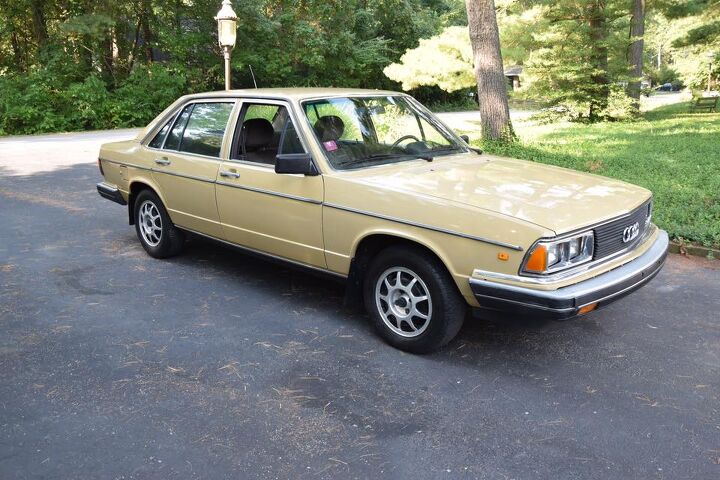






















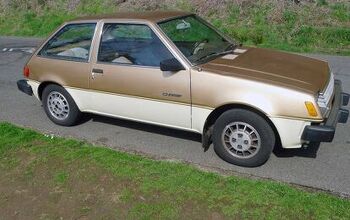

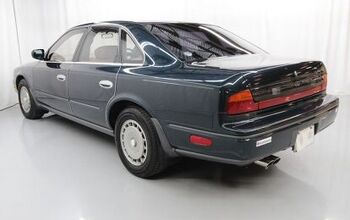
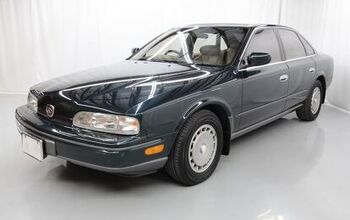
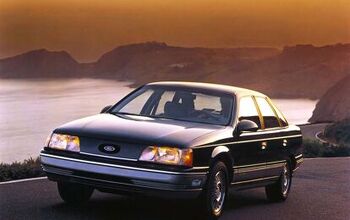










Comments
Join the conversation
these were nice cars 'during the day'. Kinda slow for all that dough. The turbo was credible--but it was overpriced for what it was (in 1980-81). Still, even at 4000 rpm, the car was smooth and quiet at 80. Door handles? I've had several VWs, no problem. But here's my issue with Audis in general: why are there used 1977-95 Audis so rare? Because owners love them? Probably not. Because owners didn't like them, or they were not worth fixing, or lemons? PROBABLY. More of these were sold than Rabbit GTIs. Yet I can find used Rabbit GTIs
I owned one. Not a world class car, more of a bigger Volkswagen. The silly 5 cylinder engine was just a 1.5l VW 4 with an extra cylinder added! Same cam, spacing, everything. Cheap ass crap! Still, I got on "huge" 215 width tires (front only), put shorter, cut down springs from a much heavier car in front, bolted the subframe directly to the car (it originally used rubber bushings), giving it some crazy cornering ability. Had no power though. It didn't help I was using Castrol 20w50 oil which eventually ruined the engine but I learned the hard way. Drove that thing in NYC, up and down the east coast, and then to San Francisco. Never let me down. It was wide enough to sleep across the back seat, almost comfortably! Bosch K Jetronic mechanical fuel injection was not responsive but was dead reliable. Unfortunately mine was an automatic. Never had any unusual issues with the door handles but I was the type that would be tightening things up or shimming something at the first sign something was loose. I know I had them off at some point. The color was "Dakota Beige". Great color. I was spraying some repairs once and asked someone watching if they wanted a tan (answer: NO). I also removed all the stupid black trim strips and filled the holes, giving it really clean custom look, plus mine was a 79 and it had the 4 round headlights with the weird silver plastic trim, which was really strange and unique and I liked it. Blacked out windows in back, sunroof (sometimes would drive through the park with someone standing up through the roof like a staff car!), had a lot of fun with that thing. If I took the front wheel of my mountain bike it would easily fit in the trunk! So much room in that thing. It was great in many ways.